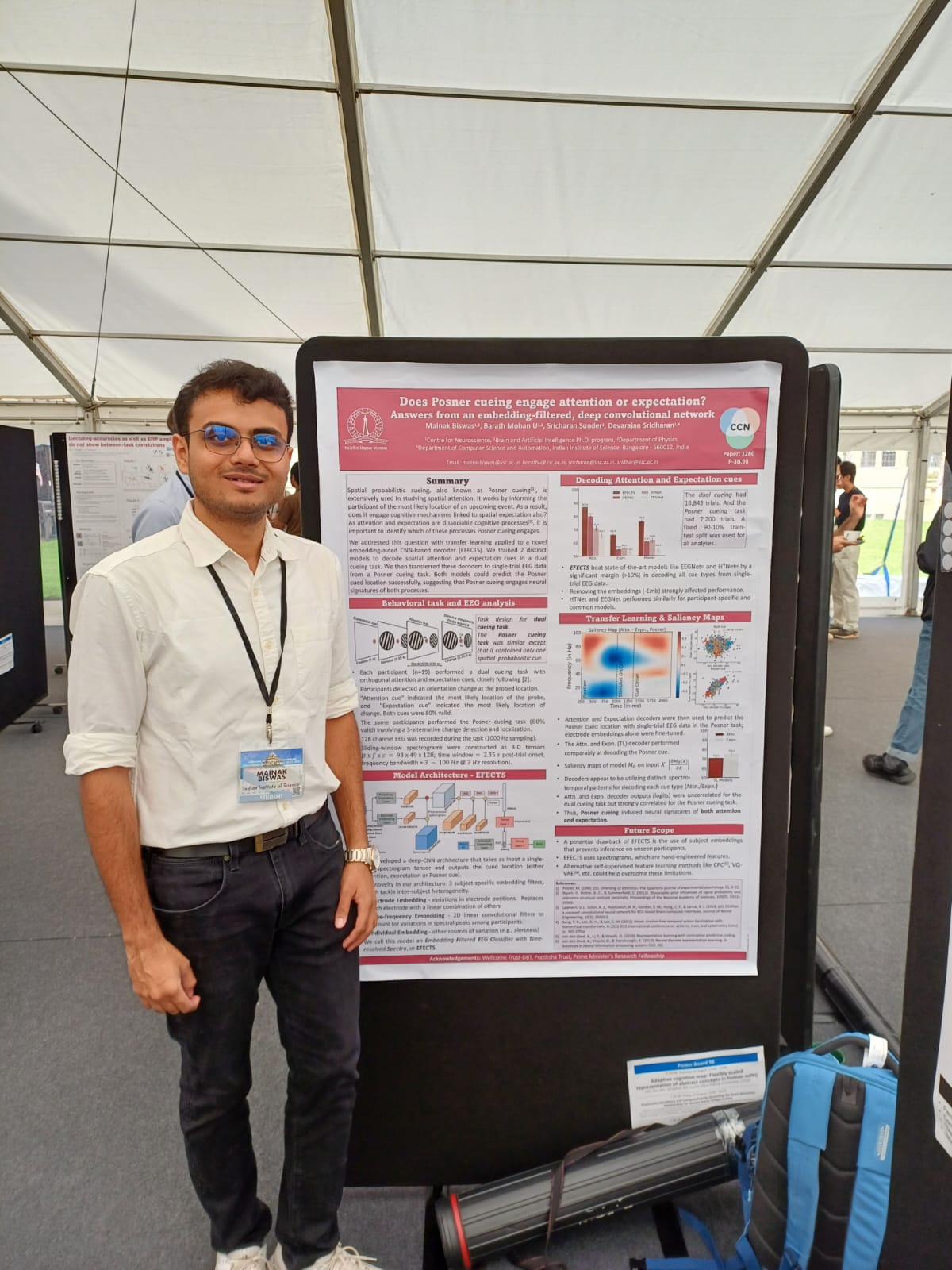Academic Projects
The following is the list of academic projects (related to courses taken), that I have worked on.
Meta-learning, MAML, Prototype learning, E9-333, ADRL, IISc, 2022
What happens when you have a huge number of classes and a few data points for each class (like omniglot )? You need few-shot/meta-learning where you learn initializations of weights using tasks. This is done for N classes having k examples each. The model must do well with a small k for any combination of N classes (potentially new) (and a support set).
In this project I implemented MAML and Prototype Learning (2 popularly used few-shot learning algorithms).
Domaian Adaptation, DANN, E9-333, ADRL, IISc, 2022
All machine learning algorithm assumes that the train and test data comes from the same distribution. For example, when we train a classifier on handwritten digits of the USPS dataset, it performs much poorer on the MNIST dataset. In DANN, this is solved adversarially by using the a discriminator network (identifies data from source and target domain) that forces the feature extractor to produce similar features for both the domains.
Generative Models, Deep Representation Learning, E9-333, ADRL, IISc, 2022
Diffusion Models take data from a distribution, gradually adds gaussian noise, until a map to an isotropic gaussian is obtained. For small mixing parameters, the reverse process is also Markov. This assumption helps us come up with a model that can leran the backward process, i.e., given isotropic gaussian noise, it can run steps of langevin dynamics (backward/also known as denoising) to generate images from the train distribution.
Generative Models, Vector Quantized VAEs, GANs, E9-333, ADRL, IISc, 2022
VQ-VAEs and DC-GANs are widely used generative models today. Vector Quantized VAEs, intuits that every image that we see today is discrete and quantized. It comes up with the idea that it is possible to represent most signals with a combination of fixed length codebook. The output of the Encoder is thus quantized into vectors in the code-book (which are themselves learnt). The decoder is made to reconstruct the image from its quantized version.
Structural Connectivity, ML, Cognition Lab, IISc, 2022
In this, we use dti brain connectivity matrices to see if it predicts/correlates with Behaviour of participants, MRS concentration, etc.
Safe Reinforcement Learning, student-teacher based RL, E1-277, RL, IISc, 2022
Traditional reinforcement learning algorithms learn about a dangerous states only after the agent has been in such states enough to impact the value function. But learning for such algorithms become dangerous. For example, we don’t want cars to learn to drive safely, only after it has met an accident.
NLP, Deep Learning, E0-270, ML, IISc, 2022
In this NLP problem, the the algorithm needs to identify if the hypothesis derived from a sentence is an entailment (follows), contradiction (is opposite), or neutral (independent sentence and hypothesis).
Optimization Algorithms, E1-260, Optimization for ML, IISc, 2021
In mirror descent, we replace the commonly use Euclidean norm with the Bregman divergence. The implementation of Mirror descent is available here.
Geometric Shape formation by fat robots, Swarm Robotics, Final year B.E. project, JU, 2021
In this project, geometric shapes are formed by synchronous, fat robots with limited visibility. Initially, these robots were made move to the circumference of a circle. This describes the algorithm.
Java-Based Social Media Website, Web Development, B.E., JU, 2020
Developed a java-based web application that allows user to follow their favourite teams/players and predict results of future matches. Based on the predictions the users are given rankings. It has a win predictor. There is a web-socket based chat feature that allows users to make groups, chat with other users, and even participate in public chatrooms pertaining to current sports events.
You can find the implementation of the website here.
For more details about my projects, please look at my
Resume (2022), and visit my
Github account.
